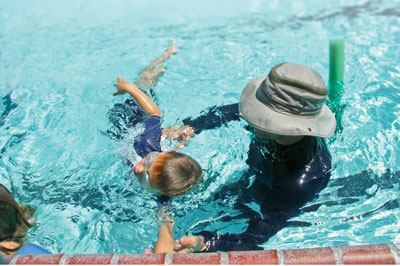Some Red Cross providers remain frustrated with costs and customer service despite lower swim fees announced earlier this month. Issues were aired this week at the Association of Aquatic Professionals 1st Annual Conference in Austin, Texas, when Red Cross officials presented a seminar on the new prices and related changes to the its aquatic program offerings.
The new, two-tiered pricing starts as early as March 1 (June 1 officially). Learn-to-swim program providers who offer the Red Cross lifeguard training course will be charged an annual fee of $300 per pool property for up to 150 swim lesson students. Additional students are priced at $1 per student. For operations that do not offer the lifeguard training, the annual fee is $350 per pool property, which covers up to 100 students. Those providers would still be charged $1 for additional students beyond what the annual fee covers.
Annual fees include learn-to-swim certificates and program marketing materials; and providers offering other Red Cross programs will have the opportunity to receive additional discounts through special incentives and credit.
But program providers particularly those with large agencies that serve thousands of swim lesson students each year, say that the price is still not affordable. “We’re still getting our budget reduced every year so we’re not in a position to pay more and I can’t pass it on to my customers,” said Jim Wheeler, who attended the conference in Austin. Wheeler is recreation services manager for the San Francisco Recreation and Parks Department, an agency that serves between 5,000 and 6,000 students. He seemed to echo pricing concerns of many other providers.
“We’re really looking to be reasonable,” said Steve Glockenmeier, vice president of product development, Red Cross Preparedness Health and Safety Services. He was among the Red Cross officials in Austin to address providers. “We’re willing to sit down with anyone to figure out how we can make it work for them. I think the larger facilities have a concern but there are ways we can work within that without being unfair to the smaller facilities.”
The new pricing is an effort to address concerns over the pricing announced in June 2011, which caused significant frustration among providers. According to Red Cross officials the intention is to create a more equitable, uniform system that works to recoup the costs of program development, but some still have questions, including will fees increase next year?
Others providers expressed frustration in trying to obtain information from local Red Cross chapters and with a reduction in customer service they say they’ve experienced.
“It seems like we’re paying more fees and getting less customer service,” said Craig Merkey, aquatics coordinator for Pennsylvania State University, Harrisburg, in Middletown, Pa.
Glockenmeier said the agency is still in the process of making organizational changes that are expected to improve customer service. “We aren’t there yet,” he said a number of times during the meeting.



